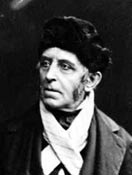 |
|||||||||
|
|||||||||
The Hemenway Hallmark
Augustus Hemenway's death in 1876 marked an important end and a significant beginning in the history of Boston; a city with citizenry who, even by that date, had become quite accustomed to historic milestones. Hemenway's death signaled the end of an era for "merchant princes." He was among the last of the greats in a long line of late eighteenth-century innovators who had seized upon the geographic advantage of their location and created a shipping trade between Boston and the rest of the world never again equaled in American maritime history. So successful were these ventures that men like Hemenway, who had to overcome his tenuous beginnings, could realize considerable wealth and social prestige early in adult life. In Boston of his day, these accomplishments entitled him to an unquestioned place among that well-documented tradition of nineteenth-century Brahmins; the members of the elite, familial dynasties of Beacon Hill. Hemenway's fortune was already secure when he met and, in 1840, married Mary Tileston, the daughter of a wealthy New york businessman. Yet, while he was able to encourage his wife, and eventually their children, to enjoy the luxuries which his labors had produced, he was personally driven by a puritanical over zealousness for work. This unfortunate compulsion resulted in a nervous break-down which lasted over twelve years and despite a short rally, eventually led to his death. He died on his sugar plantation in Cuba leaving his widow and their children financially secure in Boston. But if the acquisition of a great fortune had been the benchmark sought by Augustus Hemenway, Sr., the philanthropic use of that great fortune became the Hemenway family hallmark, primarily because of his wife and only son. Of particular note in this study is that a large part of that philanthropy was directed toward the encouragement of physical education in Massachusett's public and private schools and in four of her colleges. In the first decade following his father's death, Augustus Hemenway, Jr. financed the construction of gymnasiums at Harvard University (1878) and Groton School (1884). The Harvard Gymnasium quickly became the prototype for excellence in college gymnasium construction throughout the United States and, under the directorship of Dudley Allen Sargent, the University's physical education program grew to almost unrivaled prominance in the country. In the next decade, Mrs. Augustus Hemenway, Sr. (Mary Hemenway) financially ensured the teaching of Swedish gymnastics in the Boston Public Schools through two in-service programs led by Baron Nils Posse (1888), underwrote the famous Boston Conference of 1889, and in that same year, funded the start of the Boston Normal School of Gymnastics (BNSG). Moreover, her educational philanthropies did not cease with her death in 1894. By placing her property in trust for fifteen years, she was able to aid in the successful transfer and merger of BNSG with Wellesley College's department of hygiene and physical education under the directorship of Amy Morris Homans, her former secretary. This same trust partially assured the construction of a handsome, new gymnasium (1909) on the Wellesley College campus which continues to serve the students today. Finally, in the twenty-first year after the death of Augustus Hemenway, Sr., his only daughter-in-law, Harriet Lawrence Hemenway, donated the necessary monies to finance the construction of yet another gymnasium. This one, on the Radcliffe College campus (1898), served as an architectural model for the group of buildings which followed it and today graces the center of that Cambridge Campus. Thus, in a span of just over two decades, the Hemenway family donated four gymnasiums and financed physical education programs in three different educational arenas. Unfortunately, only partial credit has been given to the Hemenway's for their generosity to American physical education to date. No doubt part of this failure has been due to the Hemenway style of giving; it was always done efficiently and quietly, never for public acclaim. Nevertheless, when one recalls the accomplishments of Dudley Sargent at Harvard University, Amy Morris Homans at the Boston Normal School of Gymnastics, and later at Wellesley College, and the enthusiastic endorsement of physical education at Radcliffe College and Groton School under the presidencies of Elizabeth Agassiz and Endicott Peabody, one cannot ignore the Hemenway family role. Nor can we ignore the extent of their contribution when we recount the thousands of Boston school children who have received physical education instruction since 1888 and the national impact on the growth of physical education because of the Boston Conference of 1889. Throughout these recollections it becomes increasingly clear that Hemenway family support played a crucial role in the success of an educational movement which, at that moment in history, sorely needed their patronage. CHRIS KENT
Henry Ford Community College |
|||||||||
 |
|||||||||
|
|
|||||||||
